How To: Get Water 💧
I've had quite a few family members ask: "How do you get water when you're out on the trail?" Here it is:
1. Find a water source.
Usually I can get water at camp only (unless I'm hiking more than 12 miles, in which case I need more water, or if I'm camping somewhere that doesn't have a water source). There are 2 primary types of water sources Springs and Streams. Springs are generally cleaner, colder, and less likely to have harmful particles and larger dirt particles. Springs are usually found near a shelter or campsite and often have a Pipe installed to help you gather your water. Streams are more common. They are usually dirtier because they are open to leaves, dirt, bugs, and bacteria. They are also usually more difficult to fill your water bags from.
You can use your guidebook to find water, or just stumble upon water... I prefer to plan with my guidebook. I have 2 guidebooks: Guthook's Guide (an electronic app) and AWOL's Guide (I have this in the paper edition and PDF). Water is indicated by the droplet symbol.
On Guthook water sources look like this:
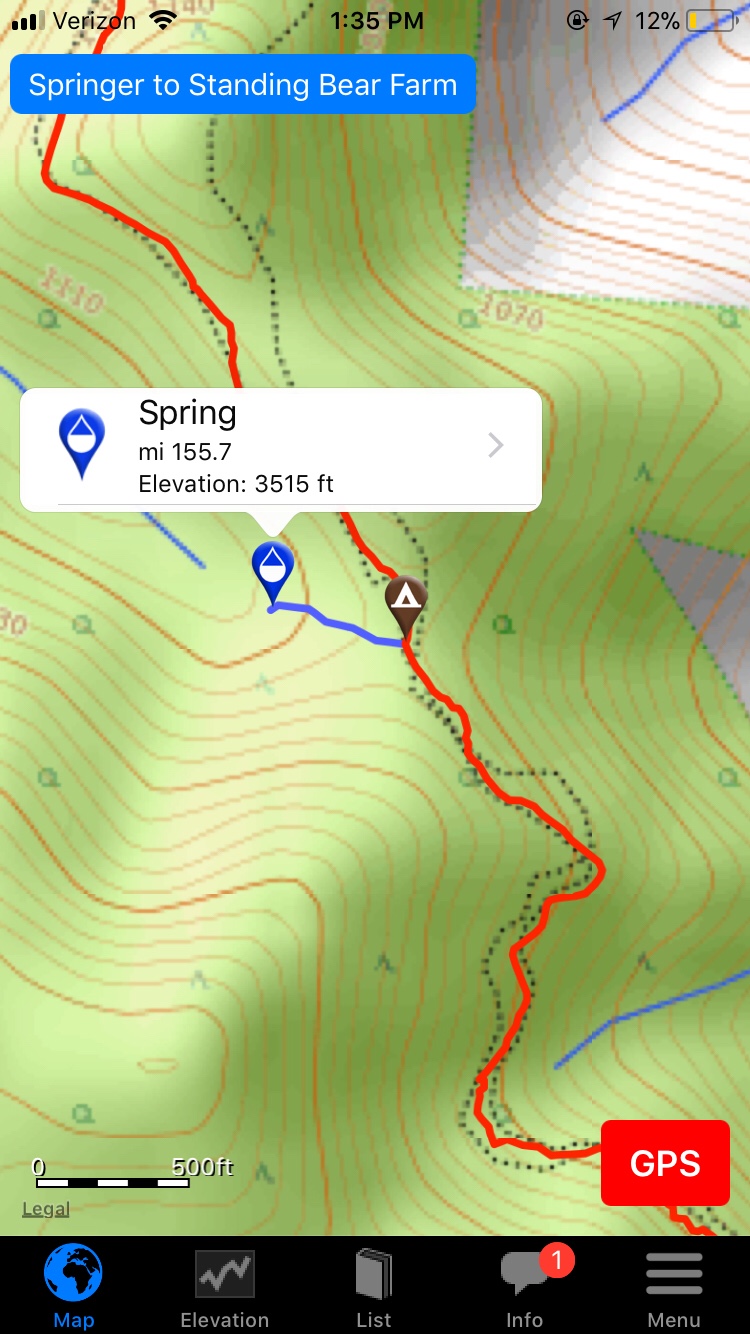
Sometimes Guthook doesn't show you every water source. So if you aren't sure if there is a source near a campsite you want to use, you can click on the campsite and look in the comments to see if anyone has indicated that they found water:
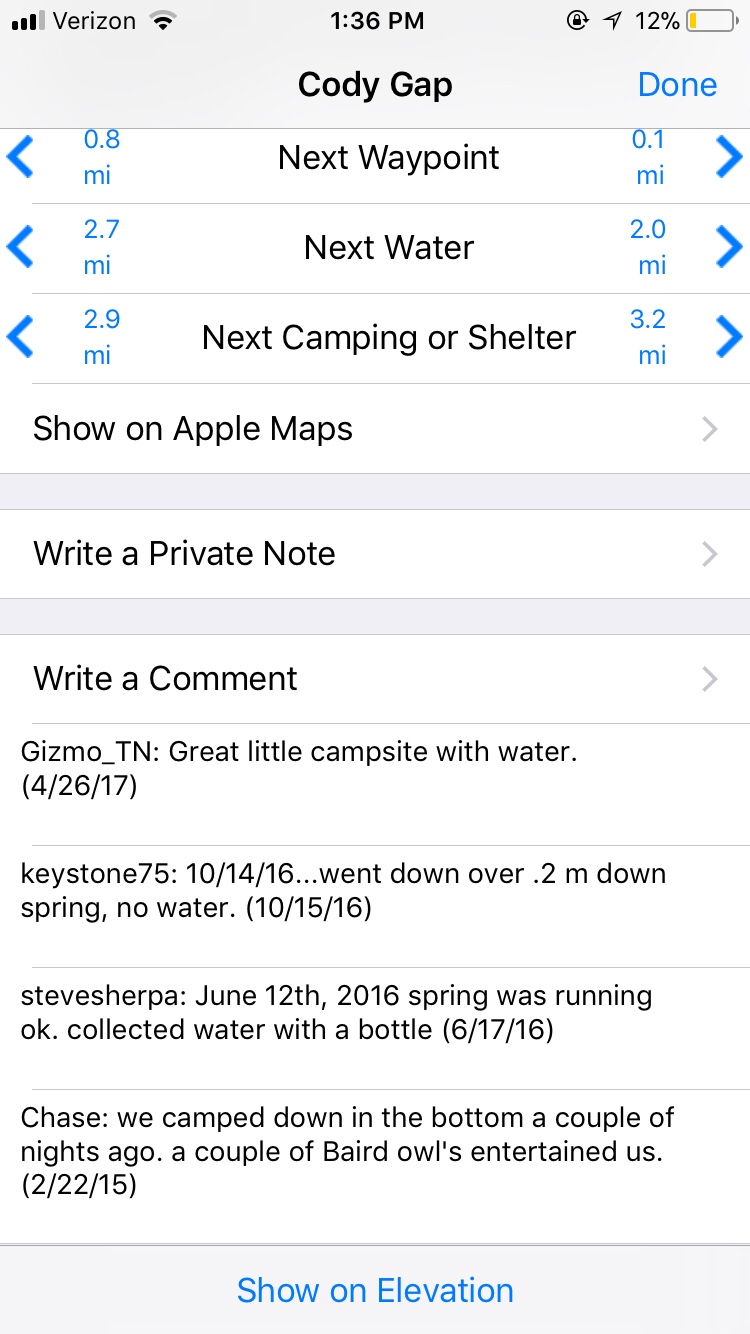
In AWOL the water sources are more accurately noted:
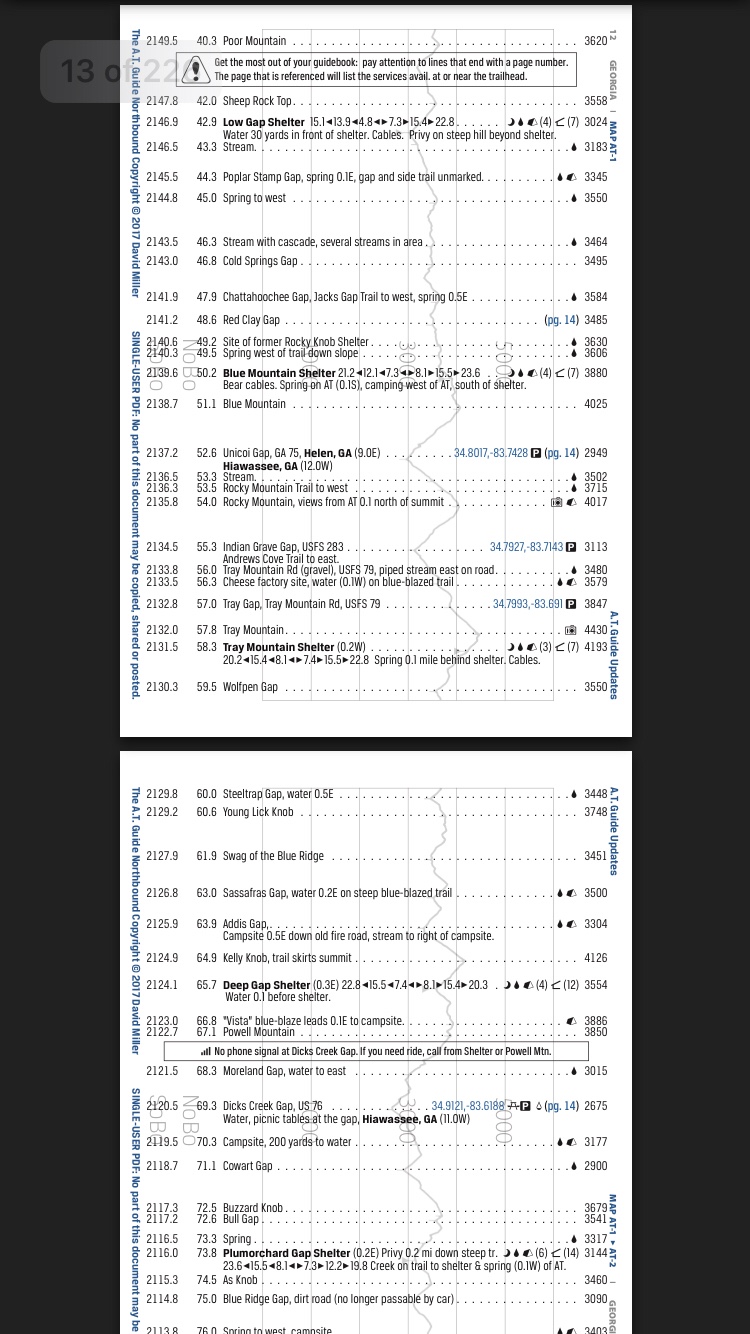
2. Gather your 'Dirty' water.
Usually the water you're gathering isn't actually that dirty. But we call unfiltered or untreated water 'Dirty'. I gather my water in a 2L CNOC Vecto bag. There are many ways to gather your dirty water and some filters even come with dirty bags!
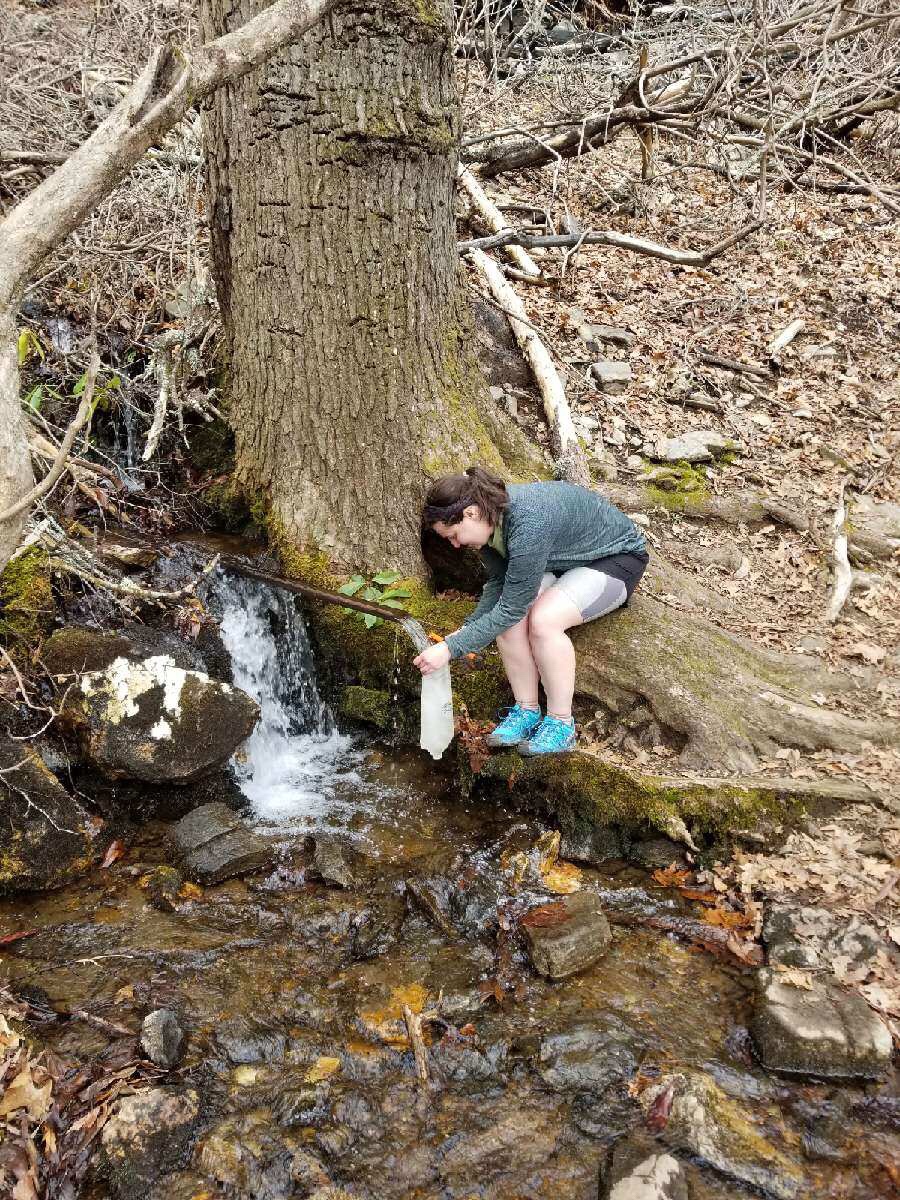
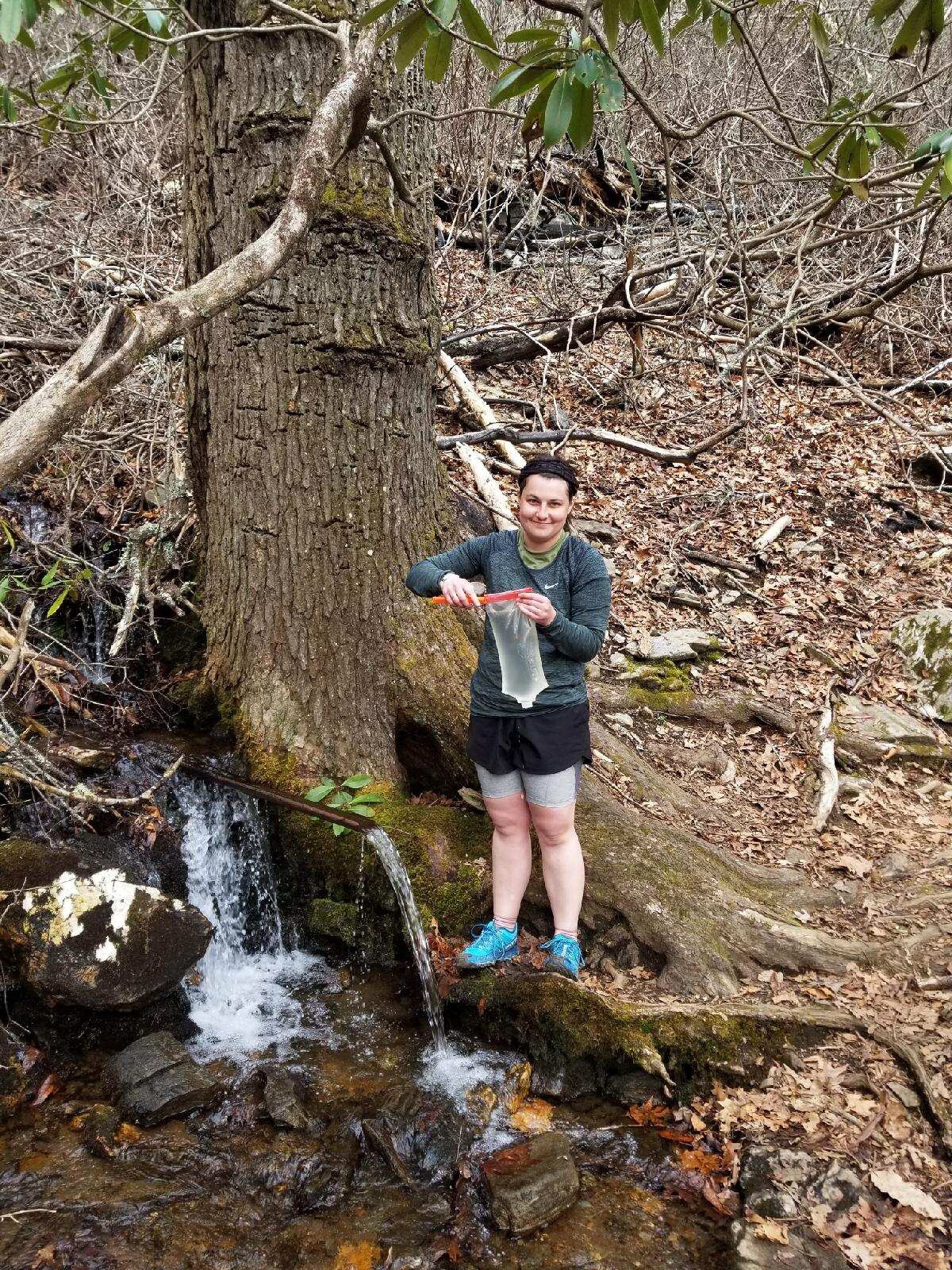
That's me gathering water from a piped spring ^.
3. Filter you water.
Usually I gather my water at camp and filter it into my bottles at the shelter or near my tent. But sometimes you have to 'camel up' or carry extra water because you know there won't be another water source for a while. During those times I filter at the source and then fill my dirty bag and leave it unfiltered until my bottles are empty. I also filter at the source if it is very cold outside. You can't leave fiber filters (like the Sawyers or Katahdyns) out in the cold or they will freeze and become obsolete. So I filter at the source and the filter then gets put in a baggie and immediately goes inside my jacket so that my body can keep it warm. In cold temperatures I also have to sleep with my filter in my pocket or sleeping bag.
I use Smart Water bottles for my clean water. These are lightweight, easy to replace, and compatible with my filter.
I use a Sawyer Squeeze water filter. This filter is great for getting out particles and many microbes but it is not comprehensive. If I get water from a standing or still source I like to chemically treat it as well. Or if there is a norovirus outbreak near by. For chemical treatment I usually use Aquamira. But some people just use bleach or they boil it. It's hard to carry enough fuel to boil all of your water. And my pot is less than 1L so it would take FOREVER to filter all of my water. So I stick to chemicals and filters.
To filter my water I attach my water filter to my dirty water bag. Then I attach my clean water bottle loosely to my filter. You have to attach the coupling loosely to allow water to release from the bottle, otherwise you create a vacuum and the filter can't flow. Next, I place the bottle between my feet to stabilize it. I squeeze the bag to push the water through the filter.
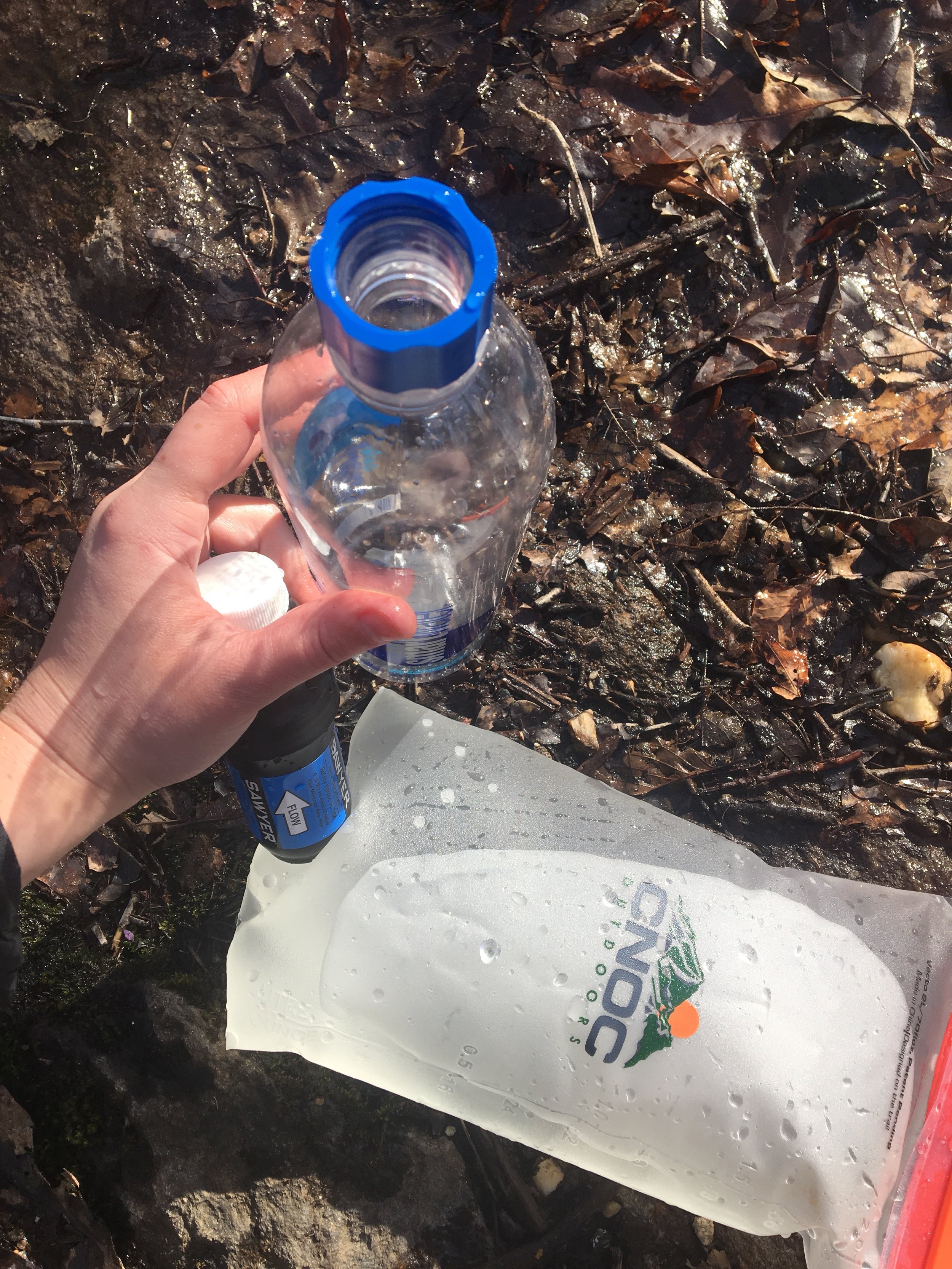
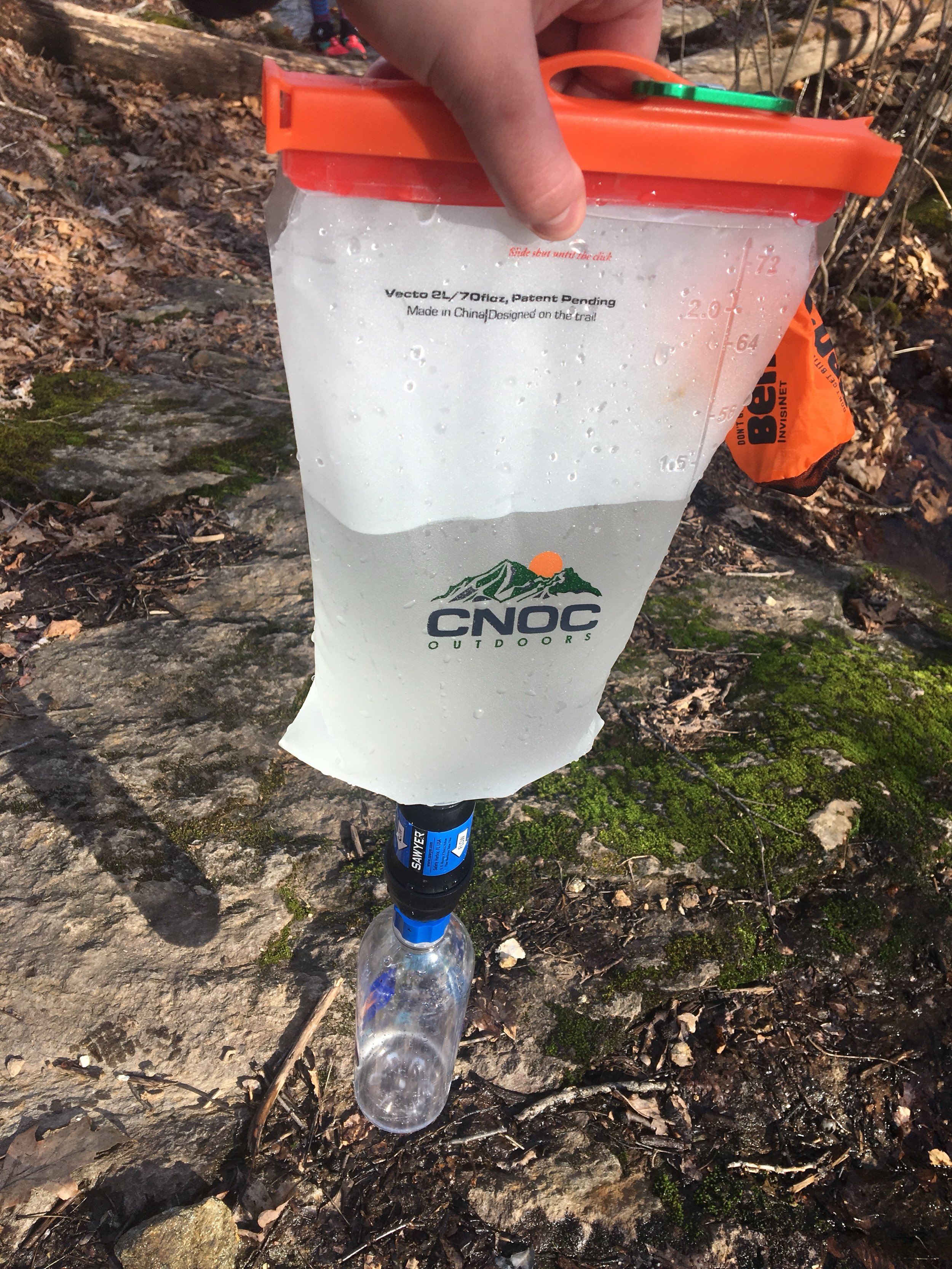
[wpvideo XapQSlOR ]
That's how I get water! My filtered water is used for cooking and drinking. I usually go through a minimum of 3L of water a day. Occasionally more depending on heat and mileage.

